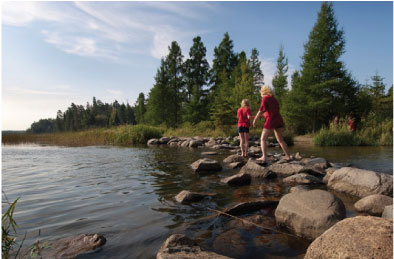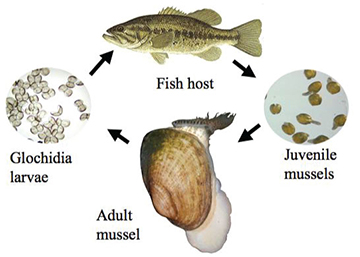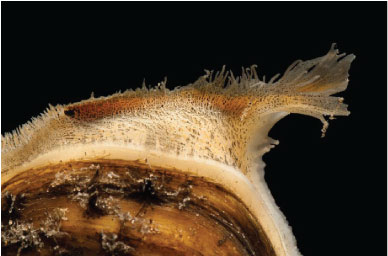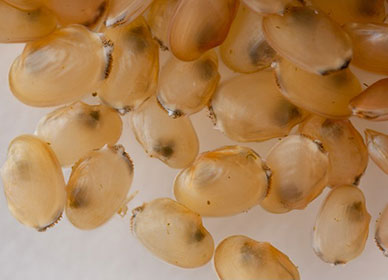MUSSEL MATTERS
All about mussels - the What Where and How
What do they look like?

The Higgins pearly eye mussel has a heavy yellow or brown shell often with faint to quite distinct green rays. The shell is oval or elliptical in shape with a difference between males and females. The male shell is nearly oval, while the female shell has a more irregular shape.
The inside of the shell is white with portions that are iridescent and areas that may be tinged with cream or salmon. The soft body enclosed by the shell consists of gills for breathing, a digestive tract for processing food, and a large muscled foot for moving and for anchoring on the stream bottom.
Where do mussels live?

The Higgins eye is a freshwater mussel of larger rivers where it is usually found in deep water with moderate currents. They bury themselves in river bottoms in water up to 15 feet deep.
Higgins eye can be found in the Mississippi River north of Lock and Dam 19 at Keokuk, Iowa and in three tributaries of the Mississippi River: the St. Croix River between Minnesota and Wisconsin, the Wisconsin River in Wisconsin, and the lower Rock River between Illinois and Iowa.
What do mussels do?

Mussels are fairly unassuming creatures, but they are still important. They bury themselves with the edge of their partially opened shells just exposed. River currents flow over the mussels as they siphon water for microorganisms.
Higgins eye are prey for wildlife like muskrats, otters, and raccoons; they filter water which improves water quality; and mussel beds create micro-habitats on river bottoms that provide food and cover for other aquatic life.

What do they eat?

Mussels siphon water for microorganisms such as algae and bacteria, which they use as food.
How do they reproduce?

Male Higgins eye release sperm into river currents and females downstream siphon the sperm to fertilize their eggs. After fertilization, females store developing larvae (glochidia) in their gills until expelling them back into the current. Some glochidia are able to attach to the gills of host fish, where they develop further.
After a few weeks, juvenile mussels detach from the fish’s gills and settle on the river bottom, where they can mature into adult mussels and possibly live up to 50 years. The sauger, walleye, yellow perch, largemouth and smallmouth bass, and freshwater drum are considered suitable hosts for Higgins eye glochidia.
Since about 2000, government agencies have cooperatively developed techniques to propagate Higgins eye and reintroduce the captive bred mussels into rehabilitated habitats in the Mississippi River and several tributaries.